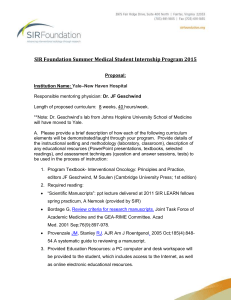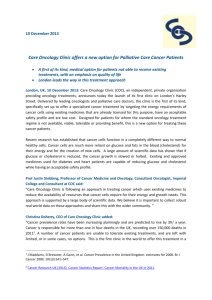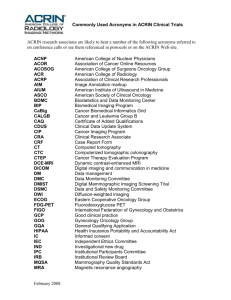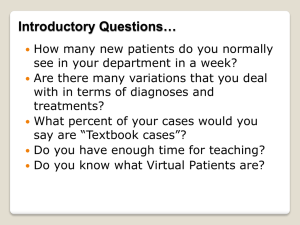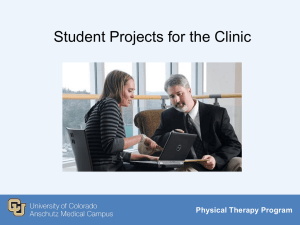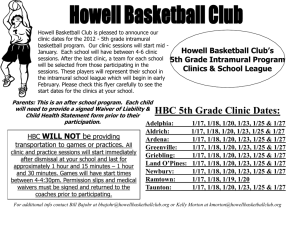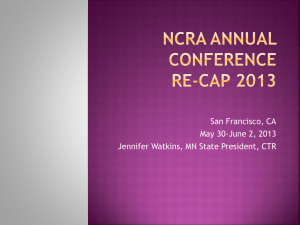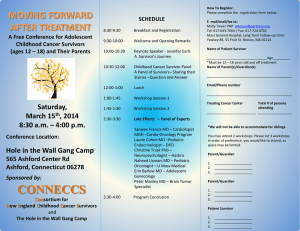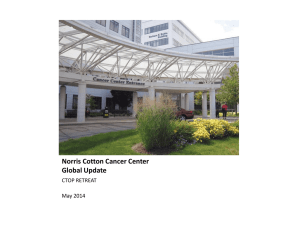Io Practise Development
advertisement
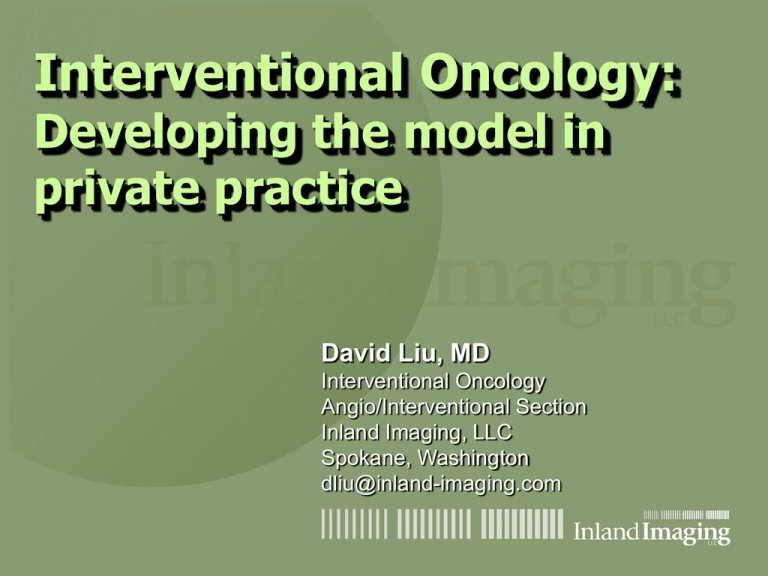
Interventional Oncology: Developing the model in private practice David Liu, MD Interventional Oncology Angio/Interventional Section Inland Imaging, LLC Spokane, Washington dliu@inland-imaging.com Interventional Radiology: Endless Potential To Cure…. Well…maybe not endless…. Is IO a Feasible Direction for IR In The Private Practice Realm? Strength We understand and do the imaging Expertise in multimodality therapy Technical abilities Weakness Lack of active participation in management Under utilization of oncology based procedures Our literature is evolving, however will not compare to pharmaceutical driven studies Opportunity Chance to develop skills and understanding of disease process No competing specialists; no one with the skill sets that we have Complementary to current paradigms Threat Bottom feeding; diluting response Perception that we are a disruptive technology Federal regulatory issues Perceived turf issues Depth of Practice Proceduralist Show Up Educator Tumor Board Clinician Clinic Research Active Passive Active Overview Creating the Service Line Establishing the Clinic The Clinician Metrics of Success Creating the Service Line Technical & Administrative Infrastructure for one stop shop Ensure time off for tumor board Pitfalls & Pearls Not thinking the logistics through Inconsistency in service Tumor board attendance is key Biopsies and central access may be starting points Passive education and collaboration Practice Patterns: Tumor Board Opportunity to provide expertise in imaging, diagnosis, staging, and localregional therapy Promote all of radiology Dovetails well with referrals to clinic Establish reputation in community Without presence, there will be no referral Establish the Clinic Technical & Administrative Physical space (clinic, filing) Dedicated time to see patients Telephone number E&M coding process/Assistance (one person) Pitfalls & Pearls Send intake and h&p forms prior to encounter Discuss and review prior to consultation Follow up clinic and letter Work with an NP or a PA Consistency in your rationale Match your clinic day with a collaborating specialty Collaborative efforts Work with referring physician, but do not bog them down with the details Make it less work for your colleagues to refer a patient to you Streamline the review process through participation in tumor boards The Clinician Technical & Administrative Be prepared to deal with patients Ensure outpatient procedures are scheduled Dedicate clinical time: dictations, filing and access Pitfalls & Pearls Call coverage Try to avoid coersion from patients and clinicians If there is not enough information to make a clinical judgment; investigate further (previous studies, labs, imaging, biopsy) Round on your patients Call the primary referring physician Do not be afraid to refer to another specialist Patterns: Referral Reciprocity Multidisciplinary/Multimodality model establish referral patterns Self referral patients may require surgical or medical consultation, but start with an E&M Team approach can help with preauthorization Pitfalls: Getting In Over Your Head Discuss prior to treatment; you do not want to be meeting the primary oncologist for the first time with a complication Avoid becoming the primary oncologist, maintain your highly specialized role Use your facilities: hospitalists, pharmacy, discharge planners Metrics of Success Technical & Administrative Productivity of service line may have long lag time Establish measures with hospital administration Ensure the halo effect is incorporated into financials Invest the time to share your vision with your DI colleagues Pitfalls & Pearls Watch for automatic DRG conversion Be cautioned about marketing….. Establish metrics prior to implementation Passive promotion Participation in studies promote your service Ortho, CV & oncology are part of hospital plans How I Would/Am Do(ing) It: Start with understanding the literature Attendance at tumor board: GI & Lung Suggest procedures as indications arise Discussion with administration Begin clinic and promote at tumor board Develop collaborations with disciplines Provide a method for cross referrals Work towards a multidisciplinary clinic Final Thoughts Offer a service, not a procedure Imperative to play a role in clinical cancer care Educate clinicians while providing black box service Ensure that your group is on board and supportive Critical path to success over the next 5 years 1a. Develop mechanism to sustain interdisciplinary collaboration…. SIR Interdiscp Consensus Panel 2004 ‘…similar and coequal to radiation oncology, surgical oncology and medical oncology…’ SIR IO Taskforce JVIR 2005 Be adjunctive, not disruptive Interventional Oncology: Developing the model in private practice David Liu, MD Interventional Oncology Angio/Interventional Section Inland Imaging, LLC Spokane, Washington dliu@inland-imaging.com
